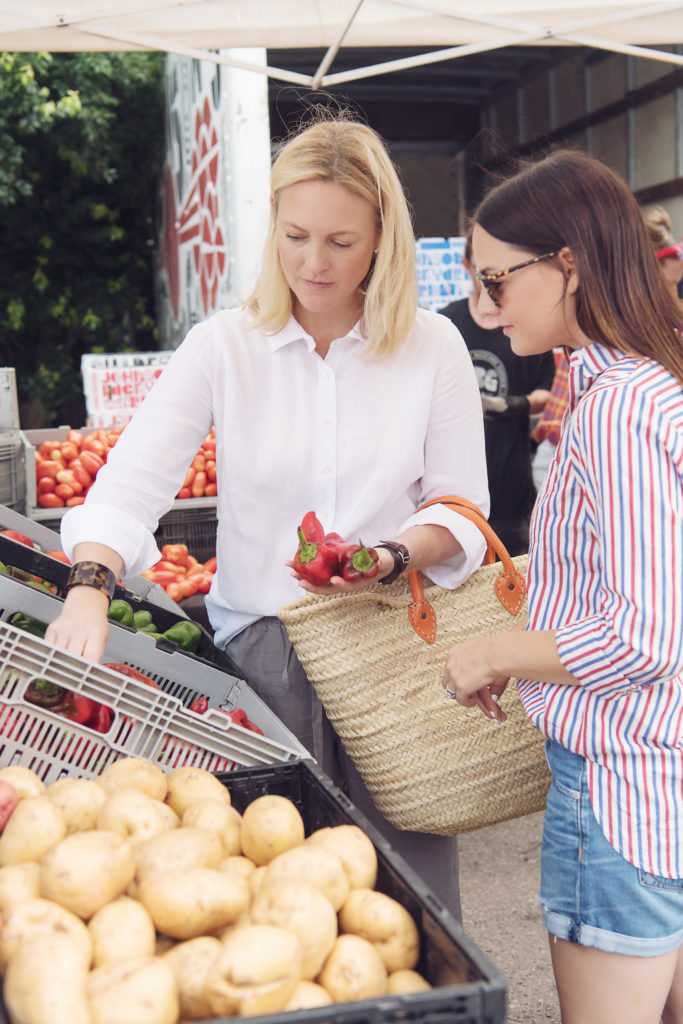
*Contributor Note: Today’s summer produce post is brought to you by Marcia Smart, Founder of Smart in the Kitchen and Farm Girls Supper Club. Marcia worked in New York and San Francisco in the editorial world before pursuing her culinary passion at Tante Marie’s Cooking School. She now lives with her husband and three kids in Houston where she is a cooking instructor, food writer, and recipe developer.
Summer eating is my absolute favorite. Give me a big platter of ripe nectarines, cherries, watermelon and apricots and I’m good to go! Truth be told, I look forward to every new season. When you wait to eat produce that’s in season, it just tastes better. It’s also better for the environment because seasonal produce at the store or market is more likely to be local, instead of air shipped and trucked and refrigerated from half way across the planet. Read on below to see Caroline and my journey to Memorial Villages Farmer’s Market and for my comprehensive list of summer produce to enjoy this season along with delicious recipes!


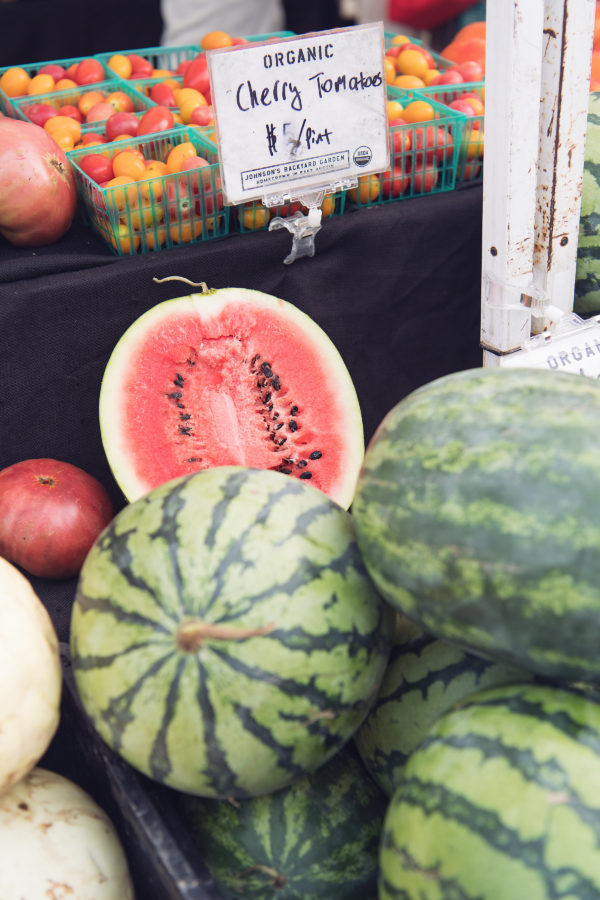
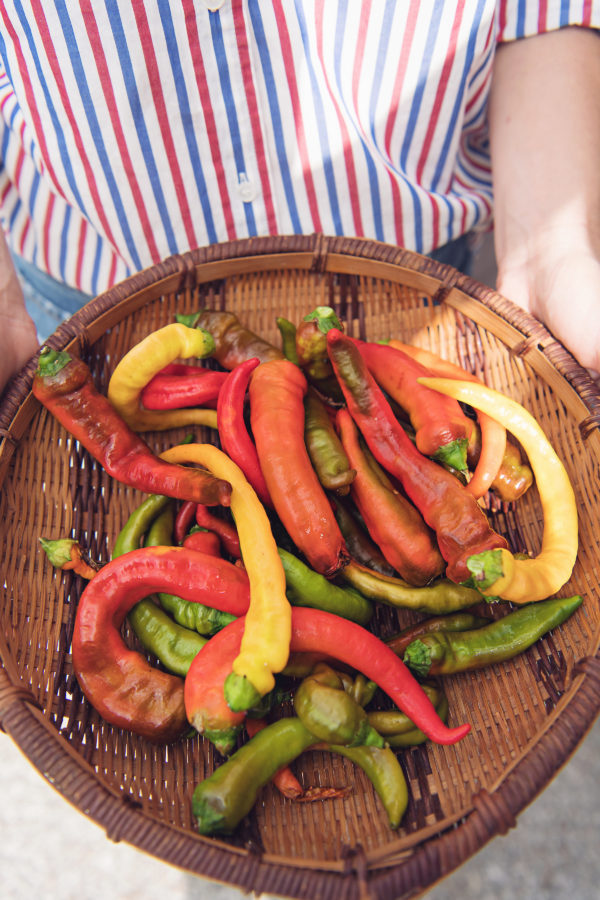
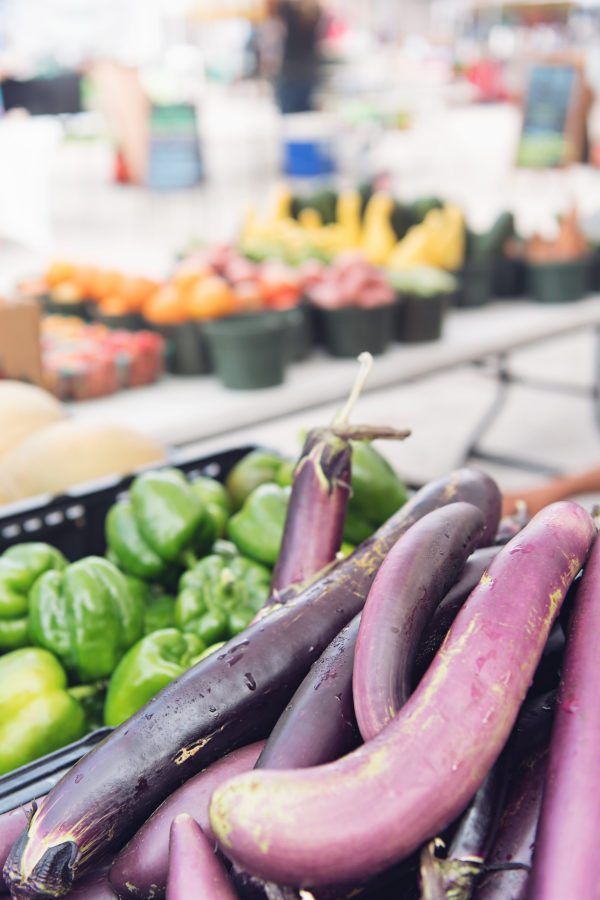
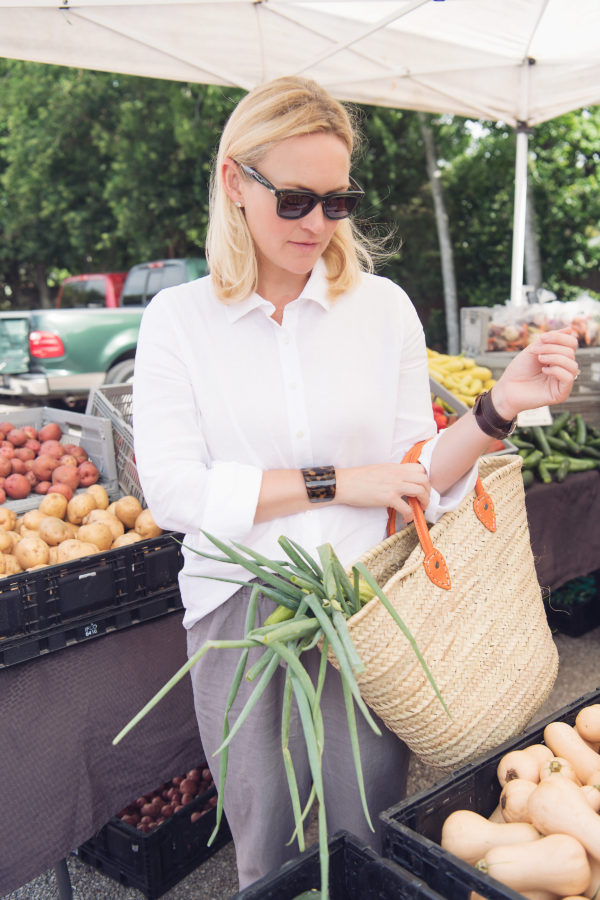
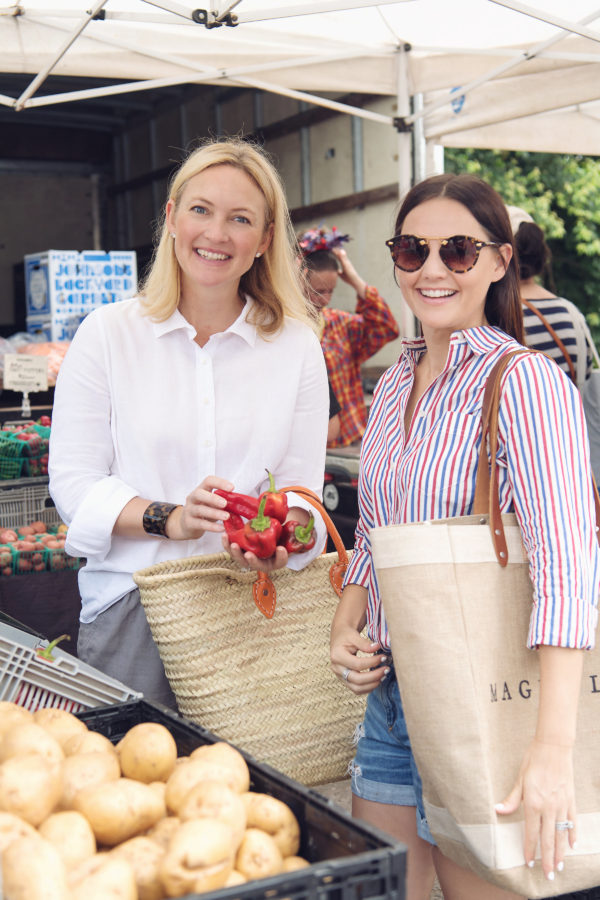
The best way to eat seasonally is to shop at your local farmer’s market. And when I’m traveling during the summertime, there’s nothing I love more. On a recent trip to Florida, I loved seeing the market full of peaches, heirloom watermelon, okra and of course, Southern boiled peanuts and pickled everything. We spend part of our summer in Sun Valley, Idaho, and I look forward to all the amazing wild berries that grow in the Pacific Northwest: Huckleberries, black raspberries, gooseberries and black currents. When I’m in Southern California visiting family, I love to pick up strawberries and figs from the Santa Monica Farmer’s Market (and pick avocados off a tree that grows in my in-laws backyard).
To get you started down the path of seasonal eating, I’ve created a list of seasonal produce below along with tips for selecting them and recipes to cook with them. We’ve also created a downloadable Summer Produce Shopping Guide for you to print out and take shopping with you! Special thanks to Meg Grant & Co. for making our printable guide especially beautiful. 🙂
I get asked a lot about which produce you should buy organic. I know not every grocery store has an organic option for every item, and organic tends to be more expensive, but it’s worth it to keep an eye out for organic strawberries, spinach, nectarines, peaches, cherries, tomatoes, hot chilies and bell peppers. We’ve added a star by these items on our printable list to help you remember. To get the full list of the Environmental Working Group’s dirty dozen and the clean 15 head to their website.
Summer Seasonal Produce
Arugula: Look for dark greens leaves that aren’t yellow and spotted. Older arugula is usually spicier. Try this delicious arugula-basil-avocado pesto that pairs with everything from burrata to grilled cheeses and of course, pasta!
Avocado: If you plan to use them right away, look for avocados that yield to soft pressure. If you won’t use them for a couple days, purchase firm avocados. Store at room temperature. Once they’re soft and fully ripened, store in the refrigerator to slow future ripening. This creamy green goddess dip is perfect for serving with crudité as an appetizer, or with grilled veggies and salmon.
Basil: Look for green leaves that don’t have flowers attached. Leaves should be bright green without dark spots. This caprese salad is a seasonal mainstay in our home!
Beets: Look for beets that are firm and unwrinkled. Cut off stalks and leaves before storing. Save beet greens to add to soups and pesto. This colorful charred beet salad is a fantastic summer side dish.
Berries: When you’re at the store lift up the container of berries to check the bottom of the container. Make sure there aren’t moldy or blemished berries at the bottom of the pile. Store unwashed until ready to use. For an amazing berry-filled dessert, try this gluten free berry crisp or a rustic strawberry galette.
Swiss Chard: Look for unwilted leaves and uncracked stalks. Swiss chard is a great leafy green to incorporate into soups like this Pork Chile Verde.
Cherries: Should be bright, plump and shiny. Store in the refrigerator. Make a cherry compote to serve with your favorite baked sweets.
Chile peppers and jalapeños: Look for bright colored peppers without any shriveling. I love a spicy margarita this time of year!
Corn: The best corn is fresh picked. If you’re buying it at a market, look for plump kernels and tight packed husks (but don’t be afraid to pull them back to check out the goods). Buy organic if you don’t want genetically modified corn. Prepare Mexican street corn – Elotes – next time you’re using the grill!
Cucumbers: Look for bright green cucumbers without any soft spots. This healthy seven layer dip with hummus, cucumbers, basil, etc. is a crowd pleaser.
Eggplant: Look for smooth and firm skin with no blemishes. Use soon after buying; they don’t store well. For a delicious dish that the whole family will love, try this cheesy eggplant rollatini.
Figs: Look for firm fruit and use soon after buying; figs are delicate and can get super soft rather quickly. Looking for a refreshing, unique summer cocktail? Try making a fig and bourbon fizz.
Green Beans: Look for beans that snap easily. This colorful green bean slaw keeps for days in the refrigerator.
Cantaloupe: Smell the stem end, it should be fragrant. And touch the round circle where the stem was attached, it should be a little soft. If you’re looking for creative ways to eat your cantaloupe, here is a slideshow of recipes
Honeydew melon: Firm skinned melons don’t smell fragrant until they’re cut. Look for firm, heavy melons that are a little soft where the stem was attached. Try making Melon Granitas as a sweet treat the next time guests come by on a hot summer day.
Okra: Look for smaller varieties (around 4-5 inches long) – larger okra tastes woody. Spicy oven roasted okra makes a flavorful side to pair with salmon or any other main.
Salad Greens: Obviously you should avoid wilted greens that are browned at the edges. Look for bright, glossy leaves. Need a simple homemade salad dressing to have on hand at all times? This recipe is the best!
Spinach: Look for crisp, dark green leaves. You can’t go wrong with a fresh spinach salad.
Stone Fruit (peaches, nectarines, apricots, plums): Look for fruit that’s firm to the touch without brown spots. It should smell fragrant. Leave them out at room temperature to ripen. Enjoy alone or served with Burrata on a crostini (yum!).
Summer squash (zucchini, zucchini blossoms, yellow squash, pattypan squash): Look for smaller varieties with firm skin. Blossoms shouldn’t be wilted. This one skillet frittata is perfect for days when you want to clean out the fridge. Or impress your guests – and even kiddos – with these amazing squash blossom quesadillas.
Sweet bell peppers: Look for skin that isn’t wrinkled. In the summertime, I love serving this red pepper romesco with raw veggies as an appetizer.
Tomatillos: Should be firm with a tight-fitting husk. Use them to make a delicious salsa for your next dinner party (or just because!).
Tomatoes: Look for heirloom varieties, such as zebra and brandywine, but all tomatoes are best mid- to late-summer. Should be aromatic, with firm bright skin. Avoid cracked tomatoes. Store at room temperature; refrigerated tomatoes take on a mushy texture. I love pairing these tangy Indian spiced marinated tomatoes with steak, chicken, or fish.
Watermelon: Tap the skin–you should hear a hollow sound when a watermelon is ripe. Look for a symmetrical melon without dents or brown spots. An arugula, watermelon, and feta salad is an excellent way to get your kids to eat their greens in the summer!
Download our Summer Produce Shopping Guide and take it with you on your next grocery shopping excursion! Do you have any questions for Marcia about buying summer produce? Ask in the comments below and follow her on Instagram @smartinthekitchen!
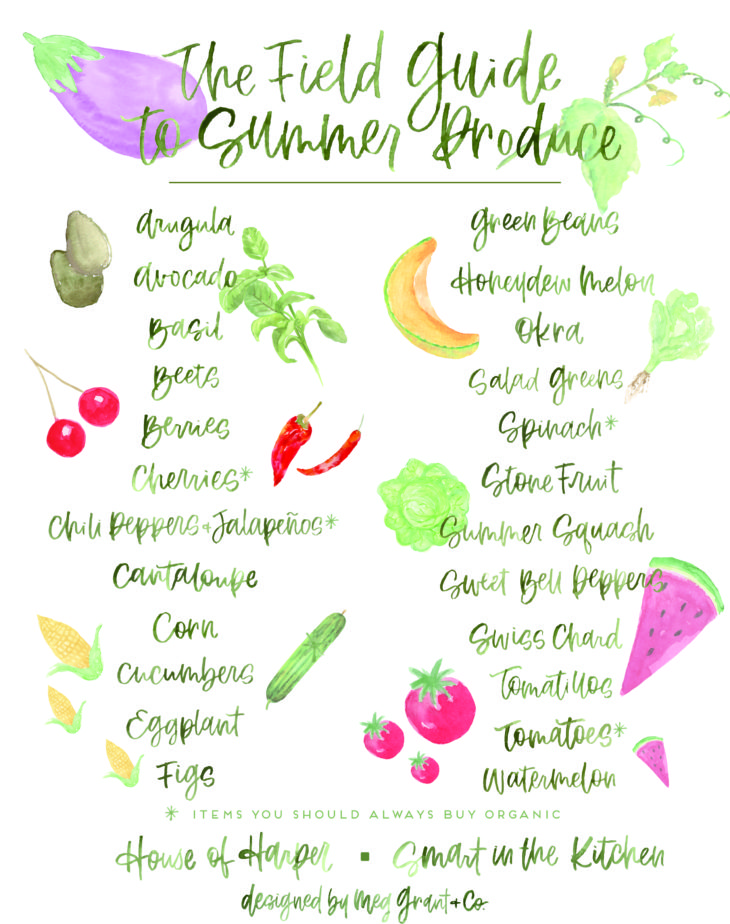
Graphic by our talented friend Meg Grant & Co.










Great post, thank you! Also I love your stripe shirt, where is it from?